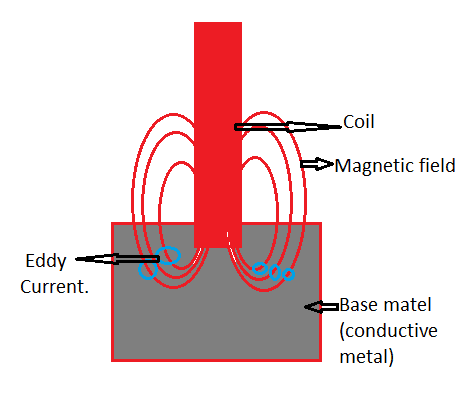what is Radiant energy?
Radiant energy is a type of energy that is emitted and transmitted in the form of electromagnetic waves. These waves can travel through a vacuum, such as space, and do not require a medium to propagate. Examples of radiant energy include visible light, ultraviolet light, infrared radiation, X-rays, and radio waves. Radiant energy can be harnessed from natural sources such as the sun, and can be used for a variety of purposes, including lighting, heating, and generating electricity.
Radiant energy, also known as electromagnetic radiation, has several advantages and disadvantages.
Advantages of Radiant Energy
- It is a form of clean and renewable energy that does not produce emissions or pollutants.
- It can be harnessed from a variety of sources, such as the sun, wind, and geothermal heat.
- It can be easily transmitted over long distances with minimal loss of energy.
Disadvantages of Radiant Energy
- It is dependent on weather conditions, so its availability and reliability can be affected by cloud cover or storms.
- The initial cost of setting up and maintaining radiant energy systems can be high.
- The technology required to convert radiant energy into usable forms of energy, such as electricity, is still relatively expensive and not widely available.
Radiant energy examples?
There are many examples of radiant energy. Here are a few:
- Solar energy: The energy emitted by the sun in the form of electromagnetic waves, which can be harnessed to generate electricity or heat buildings.
- Visible light: The electromagnetic waves that we can see with our eyes, which can be used to light buildings and provide visibility.
- Infrared radiation: The electromagnetic waves emitted by warm objects, which can be used for heating and cooking.
- Ultraviolet light: The electromagnetic waves that can cause sunburn and skin cancer, but also used for sanitizing and purifying water.
- X-rays: A high-energy form of electromagnetic radiation that can pass through solid objects and is used in medical imaging and industrial inspection.
- Radio waves: Electromagnetic waves that have the longest wavelength and can be used for wireless communication, such as radio and television broadcasting, and cell phone transmission.
Radiant energy Formula?
The formula for radiant energy is not a single equation, as it depends on the specific type of electromagnetic wave being considered. However, some key concepts and equations that are related to radiant energy include:
- The speed of light: All electromagnetic waves, including radiant energy, travel at the speed of light, which is approximately 3 x 10^8 meters per second (or about 186,000 miles per second).
- Wavelength and frequency: Radiant energy can be characterized by its wavelength (λ) and frequency (ν). They are inversely proportional, meaning that as the wavelength increases, the frequency decreases. The relationship between the wavelength, frequency and the speed of light is given by the equation:
c = λν (c is the speed of light)
- Photon energy: Radiant energy can also be quantized and described as photons, which have a certain amount of energy. The energy of a photon is directly proportional to its frequency and can be calculated by the equation:
E = hν (where h is Planck’s constant)
- Power: Radiant energy can be described in terms of power, which is the amount of energy transferred per unit time. The formula for power is given by
P = E/t
where P is power, E is energy and t is time.
- Intensity: Radiant energy can also be described in terms of intensity, which is the power per unit area. The formula for intensity is given by
I = P/A
where I is intensity, P is power and A is the area.
Keep in mind that these are just a few examples of formulas that are related to radiant energy, and there are many other equations that can be used to describe and analyze different aspects of electromagnetic waves.
What are the 3 types of radiant energy?
There are many different types of radiant energy, but they can broadly be classified into three main categories:
- Electromagnetic waves: These are the most common type of radiant energy, and include radio waves, microwaves, infrared radiation, visible light, ultraviolet radiation, X-rays, and gamma rays. They are characterized by their wavelength and frequency, and are created by the acceleration or oscillation of electric charges.
- Mechanical waves: These are waves that require a medium to propagate, such as sound waves, which travel through air or water, and seismic waves, which travel through the earth. They are characterized by their amplitude and frequency.
- Thermal energy: This type of radiant energy is the heat energy that is emitted by objects with a temperature above absolute zero. It is characterized by its temperature and is created by the random motion of particles in an object.
It’s important to note that electromagnetic and mechanical waves are forms of energy that travels through a medium, while thermal energy is stored in the object itself and can be emitted as a form of radiant energy.
What is radiant energy made of?
Radiant energy is a form of energy that travels in the form of electromagnetic waves. These waves are made up of oscillating electric and magnetic fields that propagate through space at the speed of light. Examples of radiant energy include light, radio waves, X-rays, and gamma rays.
What state of energy is radiant?
Radiant energy is a form of electromagnetic energy, which is a type of kinetic energy that is associated with the movement of charged particles. Kinetic energy is a form of energy that an object possesses due to its motion. This energy is also known as thermal energy, which means that it is a form of energy that is associated with the temperature of an object.
In summary, Radiant energy is a type of kinetic energy that is associated with the movement of charged particles in the form of electromagnetic waves.
Is fire a radiant energy?
Yes, fire is a source of radiant energy. When a material burns, it reacts with oxygen to release energy in the form of heat and light. This heat and light are forms of radiant energy, which travel through space in the form of electromagnetic waves. The visible light that we see when a fire burns is just one small part of the spectrum of radiant energy that is produced. Fire also produces infrared radiation, which is heat that we can feel but not see, and ultraviolet radiation, which can cause sunburns.
Do humans have radiant energy?
Humans, like all living organisms and many non-living things, emit energy in the form of heat. Heat is a form of thermal energy, which is a type of kinetic energy associated with the random motion of atoms and molecules. This heat energy is emitted as infrared radiation, which is a type of electromagnetic radiation that we cannot see but can feel as heat.
In addition to heat, the human body also emits very small amounts of electromagnetic radiation in the form of biophotons. These are extremely weak light emissions that are thought to be associated with cellular metabolism and communication. However, the emission of biophotons is much weaker than the thermal radiation emitted by the human body.
In summary, humans emit energy in the form of heat, which is a form of radiant energy, and very small amounts of electromagnetic radiation known as biophotons.
Is sound radiant energy?
Sound is a form of mechanical energy, not radiant energy.
Sound is a mechanical wave that travels through a medium, such as air or solid materials, by causing the particles in the medium to vibrate. These vibrations are then transmitted through the medium as a wave, which we perceive as sound. In contrast, radiant energy travels through a vacuum, such as outer space, without the need for a medium to propagate. Radiant energy travels in the form of electromagnetic waves, which are oscillations of electric and magnetic fields.
It’s worth mentioning that sound can also be converted into other forms of energy, such as radiant energy, through the process of sonoluminescence, where sound waves are used to create intense pressure in a liquid, leading to the formation of bubbles that emit light. But the sound itself is not considered as a form of radiant energy.

